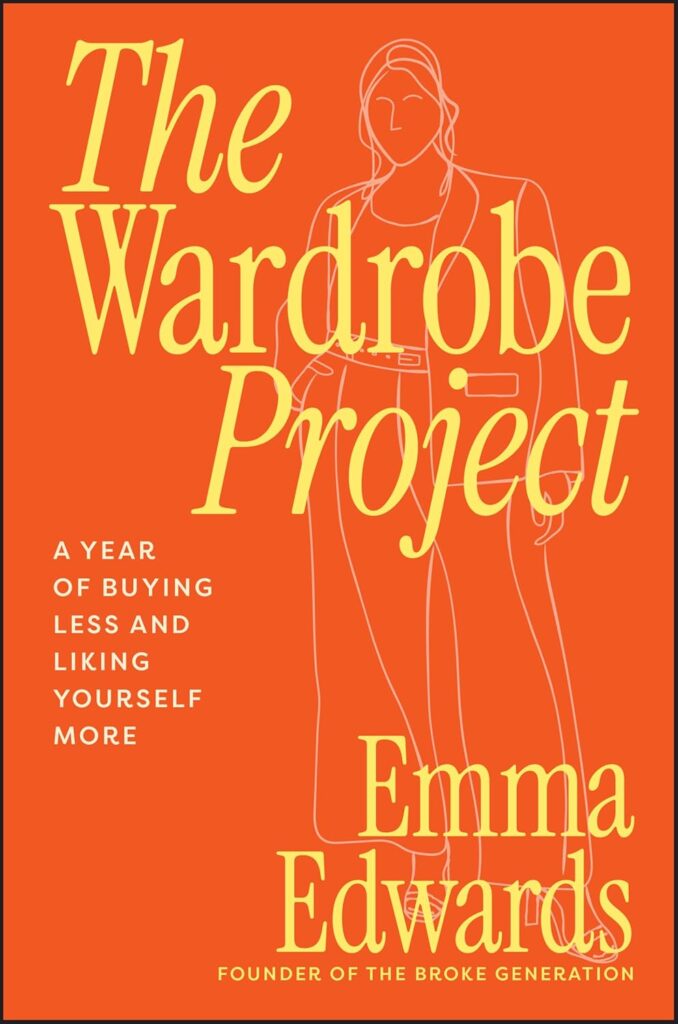When I was thirteen I watched the movie 13 Going on 30 for the first time and it certainly would not be the last. In the film I could practically see a biography of what I wanted to be like – a beautiful girl in a lively city, writing and creating for a living, falling in love and remembering those who matter to her.
The 80s, 90s and 2000s really had a knack for glamorising the print media industry. They showed the allure of VIP invites, the excitement of a new sales achievement, the exhilaration of completing that pinnacle interview. From When Harry Met Sally, to Almost Famous, to The Devil Wears Prada, the idea that you could be a fashionably mysterious woman working for a magazine was a thoroughly consuming idea for thirteen year old me.
What a sad truth it is that magazines have been suffering a slow and painful decline since the digitisation of the modern world. I would never become a journalist for a big magazine, and I would never spend my days fetching coffees and creating print spreads.
Cat Marnell’s iconic memoir How to Murder Your Life is basically a first-hand account of the death of the magazine industry. Charting her ambitious rise to editing and writing for a fashion magazine, to the downfall of the industry and her subsequent job loss, it’s an absolute must read for anyone who either loves magazines or spent most of their early-2010s teen years on Tumblr. Essentially, Marnell highlights how magazines started to decline when tech use started to go up. Why would someone pay $5 or $8 for a magazine they had to carry around and then throw away when they could dial up their internet and read to their hearts’ content?
There are many reasons why print culture is a struggling art. But there are even more reasons why it’s an art worthy of revival.
As Dr Julian Novitz contends, print isn’t dead, it’s just different. Sure, it’s less popular, in the sense that newspapers aren’t the number one source of information, but their enduring appeal shows that people are still coming back to them, despite the plethora of digital media out in the world.
So why did print media decline in the first place, and why is it regaining popularity?
Firstly, advertising. Print media relies largely on advertising for much of its revenue. I could create a website in an hour with minimal ads and still generate a small amount of income. I could create a newspaper over the course of months and would need many ads to fund it even going to print, let alone supporting sales. When the digital world began to explode with advertisements, the print world started to shrink in on itself. Secondly, content is so much slower with print. We’ll get to the positives of this in a moment, but when discussing the reason for its downfall, it’s not hard to grasp that phones, laptops, iPads and PCs are much quicker at feeding new information. Audiences don’t want to wait months for a new issue to arrive in the mail, or appear on a newsstand. They want an immediate new hit every time they refresh their browser. The jokes about iPad kids and attention spans iterates this: people want more, and they want it quicker. Slow and steady printed media has no place in a fast-paced world.
Finally, publishers can’t keep up. Local newspapers can’t afford to print a full newspaper each week with a detailed overview of the happenings of your community, just like how Dolly and Girlfriend couldn’t keep up with the surge of online news and media. To create printed media, companies must work twice as hard as those creating digital media, and will produce far less content in the same amount of time. From a business perspective, print media is a burden not worth the investment.
So why have I, an avid fan of printed media, and an avid hater of digital reliance, spent the last three hundred words slamming the print industry?
Because I can see why print media fell, but I can’t see why it should stay that way.
Like Karen Schneider discusses in her Ted Talk, printed media is just so wildly different to digital media. How does it feel to hold a newspaper in your hands? What about the romantic nostalgia of flicking through a magazine while laying in the grass, the summer sun on your skin? How does that compare to holding your phone above your face, squinting in frustration, not paying attention to anything except for the blue light emanating from your screen, showing a vacation someone else took to Mykonos?
Basically, print media is just more. More authentic, more natural, more local, more real. We can read newspapers from our community, not just the state we’re in. I love Substack and reading articles on it, but the fiftieth reflection in a row about Sabrina Carpenter’s false feminism is never going to be as enlightening, as uplifting, as a profile on a community local who opened up a non-profit organisation. A magazine discussing the exact type of art I like, featuring profiles on authors I’m interested in, will always mean more than a string of Instagram posts from a celebrity. There will be so much more enjoyment reading a zine that I bought at a local market than there would be in watching a dozen TikToks in a row.
Print media brings life back into consuming media. It reduces the noise, the clamoring for attention, the buzz, and it boosts the authenticity.
To further argue this point I am so clearly passionate about, here are three reasons why print media still matters in a digital world:
1. Impact and Significance
When someone makes a piece of printed media, they’ve put their heart and soul into it. In the 1990s, magazine culture was undeniably huge, with Riot Grrrl bands like Bikini Kill creating political magazines to promote feminism to their like minded fans and to encourage girls to have the audacity of living independently. Other icons of the 90s like Hole also featured regularly in fan-made magazines, solidifying the media format as a pioneer of cultural revolution and change.
When you purchase a magazine, you’re making an impact.
A magazine is created to share an idea, and by buying that magazine and contributing to the income of the individuals who made it, you’re allowing that idea to flourish and grow.
Of course, the same can be said for a digital version, but a print version takes so much time and heart, and its impact on you will be more significant than if it were read through a phone.
A study by Johnston regarding university students in Australia found that content is more thoroughly remembered, understood and learned when it’s consumed via print form rather than digital. Their study highlights how the majority of young Australians preferred to study print formats, because they found they remembered the content, and that what they learned seemed more significant or real than what they studied online.
It’s easy to see the truth in this. When you do an online class via Zoom, it’s so easy to spend most of the time on a different browser, barely paying attention, your mind only piqued when the tutor says something awful like ‘time for breakout rooms’. But when you’re studying in person, in a lecture hall, you can pay closer attention to the unit. You notice the topic, the quotes of significance, even little things like the cadence of the tutor’s voice, all of which adds to your understanding of the content. Your tutor would also feel more fulfilled delivering an in-person lecture. After all, how many of us would rather teach to grey rectangles on a screen for an hour, than fifty in person students, all asking questions, all taking notes?
Print media has more impact on you, on the creator, and on the importance of the content consumed.
2. Mindlessness vs Mindfulness
I recently saw a comment that I hated on Substack, where someone said ‘reading books is still consuming content’. I thought that was a thoroughly pessimistic view of reading: that it’s akin to scrolling on TikTok. There is a vast difference between mindless media and mindful media. Mindless media would be a senseless video on Reels that you’re not even enjoying, but you can’t take your eyes off. A dumb comedy skit that you haven’t laughed at once, but you’ve been staring at your phone for forty minutes and your hand is going numb, too zoned out to notice how empty your brain is. Mindful media would be reading a book, your mind imagining the world shown in it so vividly that when you look up at the real world around you, you feel a little disoriented. Mindful media would be reading the local news from a free public library magazine, showing you all the community programs that are going on around you. Mindless media would be reading Instagram comments in which two anonymous users are fighting over something that has no real impact on their lives, but has offended them nonetheless.
Digital media, however, is not always mindless. A curated Pinterest board that makes you feel like you’re scrapbooking can be fun. Seeing posts from your friends about their holidays can be endearing. But mindless digital media, like endless posts about brain rot memes and insignificant influencers promoting yet another liquid blush seems like a waste of time.
You have such finite hours on this earth. Would you really want to dedicate a chunk of those hours to watching TikToks? Or would you want to use those same hours to learn more about the world around you and the people in it?
As a librarian, I will always and forever highlight the importance of books and reading. Even if you hate reading, a magazine article from a copy of Vogue (which you can borrow from your local public library, btw) engages your temporal lobe, your frontal lobe, and the angular and supramarginal gyrus, just to name a few. Additionally, your heart rate decreases as your body relaxes, entering a state of mindfulness and meditation while you read. Your cortisol rate lowers, which is the converse to phone use, which increases cortisol, resulting in more stress. Both frequently looking at your phone and the nature of the content on it, can contribute to your body’s stress levels, affecting hormone management and mood stability.
The bottom line: reading is better for your brain and your body. Print media is not the same as mindless media consumption.
3. Authenticity and Trust
How many times have you edited the caption on an Instagram post, changed your bio on Facebook, or deleted a comment from years ago on YouTube? How many times have you posted a photo then archived it, never letting it see the light of day because your personality, and the version of it you curate online, keeps shifting?
The digital media landscape is a constantly changing world of careful curation and perfectly presented identities. A company can change their brand overnight (looking at you, Pretty Little Thing) and a celebrity can remove any trace of moral wrongdoing by deleting content (looking at you, Chrissy Teigen).
When you print something, this is just simply not the case. You can’t un-print a magazine, or redact a newspaper from circulation once it’s out in the world. Printed media is final, and the world sees what you originally wanted them to, even if your ideas or direction changes.
Of course there are second edition books and reprints and public apologies, but for the most part, a lot of trust is bestowed onto printed media because of its finality. You can have more faith in a magazine when you know that what they’re putting out is the best, and most well-planned version, they can.
Furthermore, printed media often goes through many, many, many checks. Anyone who has published a book or a newspaper article knows just how many back and forths it goes through with the editor and the author. Sometimes, when your work goes to print, you don’t even recognise it anymore. It can take months to finalise a piece, whereas it could take two minutes to approve a social media post. Within those edits are fact-checkers, peer-reviewed articles by scholars against which the content is compared, and professionals consulted for their opinion. The appendices of non-fiction books are often quite extensive, with sometimes pages and pages of references and sources. Including these shows that the work is intentional, researched, and quite often factual (of course some references are absolute rubbish, but that’s another issue for another time).
The content of printed media is therefore more trustworthy, and within that comes more authenticity.
Printed media has personality. It has uniqueness and edge. It also has truth and depth, traits which are severely lacking in social media posts.
In a digital world, it’s ironic that so many young people feel so disconnected. Social media and the formats it functions on were largely intended to increase connection across borders and barriers. But I feel it’s done quite the opposite, and research supports this. A 2024 report found that 71% of young people who use social media feel lonely very frequently. This is adjacent to a report from 1991, in which 7.2% of respondents reported feeling lonely. How on earth could this number have jumped so much?
For one thing, how we spend our time has so drastically changed.
Renting a DVD, talking to the store clerk, borrowing a book, chatting with the librarian, reading magazines with your friends in the summertime; all of these things are social, they make you feel connected, and they all surround older media formats. This is compared to clicking on a Netflix film, downloading an eBook or scrolling on your phone beside your friend, in silence. What a lonely portrait it paints.
Print media supports the very things that make us human, that make us whole: creativity and connection. Without print media, we’re all just repeating the same old ideas, reposting the same old memes, scrolling through the same old videos.
So next time you’re bored and reach for your phone, take a second. Look for that book you’ve put off reading for a year. Get out an old box of craft materials and make a collage. Drive to your local library, borrow a magazine, sit with a coffee in a local park and remember that the world didn’t lose its magic, you just stopped looking for it.
Read more of our Thought Provoking articles here.





